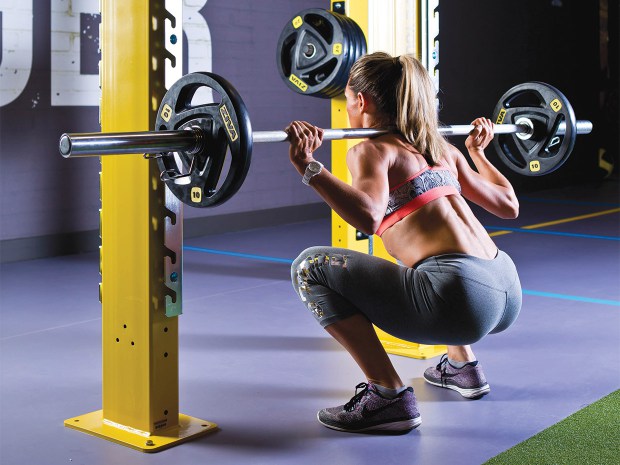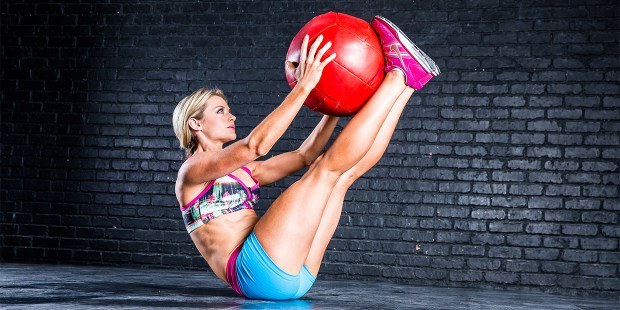
Want to get fitter?
Don’t just run more. Instead, consider a workout schedule that incorporates high-intensity interval training, weight training and cardio and flexibility. Follow these steps to create your own fitness-boosting workout programme
1. Plan your workouts (and don’t forget to plan for progression)
Arriving at the gym with a plan will ensure that you don’t waste time and that you’re working towards a predetermined goal. Aimlessly doing exercises that serve no real purpose won’t deliver the results you are looking for, which will lead to a loss of motivation and commitment. Planning your exercise programme properly also means periodising your workouts so that you don’t plateau. By doing this you will continue to make progress with your training, avoid injury and you will constantly find your workouts challenging and interesting.
2. Plan for high intensity cardio
High-intensity interval training (HIIT) has been proven to burn more fat than steady-state cardio and also helps elevate your metabolism for a longer period of time after training. Working through a wide heart rate range during a 45min spinning session, for instance, will burn more fat and more calories than 45min of the stationary bicycle as it uses more energy systems, increases post-exercise oxygen consumption for a prolonged calorie ‘after-burn’ and places greater demands on your cardiovascular system. It also releases a different set of hormones due to the intensity, which aid in muscle building and fat loss, whereas steady-state cardio increases the release of the stress hormone cortisol, which can lead to increased fat absorption.
Schedule one or two HIIT sessions a week.
3. Plan for functional training
Functional training includes the use of various multi-joint, complex compound movements that incorporate multiple muscle groups in one exercise. These moves generally mimic the typical movements that we use in our daily lives. Think about the squat, for example.
By performing these exercises we are therefore improving the efficiency with which we move, improving our vitality and ensuring that we can enjoy life with the mobility and ease of movement that we were designed to.
Functional training also burns more calories than single-joint or isolation exercises, which makes it an ideal form of weight training for weight loss. A number of sporting codes are also incorporating more functional training into their conditioning regimes in order to benefit from the overall increases in strength that these exercises deliver.
Schedule two to three functional workouts each week.
4. Make it a full-body, multi-plane experience

Model: Chantel van der Westhuizen | Photography: Cindy Ellis (www.cindyphoto.co.za)
Total body exercise routines give you an opportunity to incorporate compound movements into a challenging energetic workout. Focus on movements like squats, push-ups, lunges and shoulder presses as they are more functional exercises and also helps strengthen core muscles. Full body workouts are also very time efficient as they burn more calories per session.
Also take note of the planes you move your body in when you work out. And by this, we mean where you move. Do you only move your arm up and down, or do you engage in exercise that requires a variety of movements through multiple different planes? The latter more closely mimics real life movements. This ensures that your body becomes stronger in all movements and also incorporates important stabiliser muscles into your workouts that normally wouldn’t be engaged when moving in a uni-directional plane.
Turn your regular functional workouts into dynamic multi-plane, full-body workouts, and you’ll soon improve your total fitness!
5. Do triathlon training
Training across three disciplines means that every day is a new challenge and you never get bored! Plus, you’re more likely to get the right blend of cardio, functional and strength/weight training in.
Just beware, as we approach the colder months don’t make your workouts too strenuous and intense as your chances of catching a cold increases. This can set you back for a couple of weeks, if not more.
To ensure that your fitness and health both benefit schedule one hard training session, followed by an easier session on the following day.
Here’s an example:
| Monday | Tuesday | Wednesday | Thursday | Friday | Saturday | Sunday |
|---|---|---|---|---|---|---|
| Medium swim | Medium bike ride | Resistance training (weights) | Medium run | Long bike | Short swim | Rest |
| Long distance run | Rest | Short swim & medium run | Rest | Interval running/sprinting & medium swim | Resistance training (weights) | Rest |
6. Plan to rest
While the time you spend lifting weights or running on the road is important, if you don’t take the time to let your muscles recover then you won’t see the results you want.
When you exercise you stress the muscle and cause micro-trauma to the muscle cells. It is only when you rest and feed the damaged muscle with the proper nutrition that your body starts to respond to exercise. As such, it is important that you give yourself at least one day’s rest during the week and that you include periods of active rest and recovery in your programme to avoid training plateaus and overtraining.
7. Don’t neglect your core

Model: Laura Danielz (@LauraDfit) | Photography: Cindy Ellis (www.cindyphoto.co.za)
Organisms that stand upright on two legs need to have structures in place that support this type of movement. For humans, that is not your spine or skeletal system, but rather your core muscles. Your core consists of the major muscles of your abdominal region, as well as your glutes, lower back and hip flexors. Functional movement is highly dependent on your core, so to improve your quality of life, increase your performance in the gym or on the road, and limit the occurrence of often debilitating back problems you need a strong core. Take a pilates class, or simply research core-boosting exercises that you can incorporate into your workouts, to strengthen your core.
8. Work on your flexibility
Exercise, especially weight training, shortens your muscles. This increases the likelihood of injuries. This is why stretching is important. It improves your range of motion, elongates muscles (so they look better) and goes a long way to preventing injuries.
Stretching can also assist with the removal of lactate during and after exercise, so include a static stretch or two between sets to improve your performance and recover faster.
9. Spice it up
Spending five to six days a week in the gym can become boring, even for the most committed gym bunny. Thankfully the world is full of fun, exciting and different activities to do that all help in achieving your overall goal. So, instead of running on the treadmill join a running club and head outdoors to meet some new people, have some fun and get some exercise at the same time.
You can also use different sporting events as different challenges to keep you motivated and working towards new and exciting goals periodically. This could be running a half marathon, entering a triathlon, doing a mountain bike race or even climbing Mt. Kilimanjaro.
